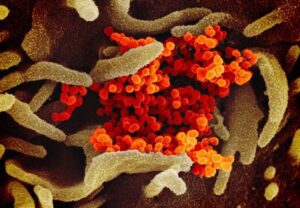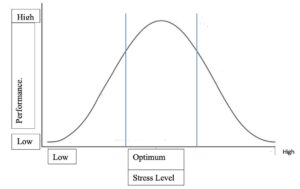This publication is in proud partnership with Project UNITY’s Catalyst Academy 2024 Summer Program.

Source: Pixabay/qimono
Abstract
Background: Substance abuse disproportionately affects low-income adolescents in Baltimore, Maryland. Specific social determinants of health (SDoH), such as limited educational access and preexisting mental health disorders, increase susceptibility to substance abuse and highlight the need for this medical issue to be tackled using a public health lens. Objectives: This paper aims to analyze the prevalence of opioids in Baltimore, Maryland through a public health lens and introduce a comprehensive plan of action in response. Methods: We analyzed information from over 60 different academic publications alongside six stakeholder interviews to identify the most impacted communities and understand the complexity of substance abuse. Results: Our report reveals the persistence of substance use disorders (SUDs) in Baltimore, specifically among low-income adolescents. While current interventions exist, most are inaccessible to at-risk communities, provide insubstantial prevention efforts, and fail to incorporate empathy. Conclusion: To ensure success, Project EMPATHY will approach substance abuse by providing accessible education through both online and physical interventions. Our digital resources will include an online database with up-to-date drug trend information, local and affordable treatment centers per state, guest speaker recordings, a social media page, and an online newsletter enabling us to reach a large scope of people. Additionally, we will put on summer workshops that target our youngest and most vulnerable populations. Presenting an empathetic outlook about the health implications of SUDs, available resources, and the negative consequences of stigma, this initiative will empower patients and ensure they never feel unsupported.
Keywords: Substance use disorders (SUDs), Low-income, Adolescents, Baltimore, Opioids, Drug abuse
Introduction
Substance abuse is defined as the unhealthy use of illicit or legal substances often for recreational use or athletic performance enhancement. Currently, 48.7 million Americans above the age of 12 in the United States struggle with substance abuse2. The health implications of substance abuse range from addiction, poor academic performance, and lowered inhibition (leading to risky behaviors like increased crime involvement and unsafe sex practices) to heightened risk of contracting diseases such as HIV/AIDs, lung disease, cardiovascular disease, Hepatitis B and C, and stroke4. Individuals with mental health conditions like anxiety, schizophrenia, or PTSD have a higher risk of developing a SUD5. Adolescents aged 12 to 17 are most at risk for developing SUD, and many continue to have the disorder into adulthood, which leads to individuals aged 18 to 26 having the highest SUD rates.
Substance abuse is currently addressed primarily through treatment, including group therapy and medically assisted detox. Though clinical treatment can be effective, relapse rates range from 56.8% to 81.8%1. In the following sections, we will approach SUDs from a public health perspective, considering the target population for our intervention, SDoH that increase susceptibility, existing interventions and corresponding areas for improvement, stakeholder perspectives, and the potential use of digital health technologies to improve the treatment of SUDs. The analysis described in this report culminates with our proposed 12-month plan of action – the Empathy Project – which places empathy and understanding at the forefront of addressing substance abuse within the target population.
The Importance of a Public Health Lens
Public health – as a field, approach, and solution – is a steadily rising outlook in combating modern health concerns. The CDC defines public health as “the science of protecting and improving the health of people and their communities”3. This is primarily accomplished through disease prevention to improve the general well-being of the population. A Public health approach emphasizes targeting the root causes of life-threatening issues for which clinical treatment may not be effective – high relapse rates for SUDs being a good example.
Substance abuse, as a chronic disease, can’t entirely be treated by medicine or therapy—it is a multifaceted issue with various causes and effects dependent on numerous factors. Treating it effectively requires considering the personal condition of each individual who suffers from the disorder. But many people, especially those below the poverty line, have a lack of resources to help them abstain.
Methods
Conducting a successful literature review requires the use of reputable databases such as Google Scholar or Pubmed and systematic search methods. We queried these databases with keywords such as “adolescent drug use,” “substance abuse,” and “addiction” to find relevant articles. Through an in-depth analysis of over 60 scholarly journal articles, news articles, and personal statements, our research group reported a multitude of factors that contributed to the adolescent substance abuse issue. We also identified public health solutions that could affect the future of the crisis. Our findings are specific to the state of Maryland and the United States at large.
Beyond the literature review, our team (which consists of members from southern Maryland and central New Jersey) interviewed six different stakeholders across the country, including law enforcement officials, professors, physicians, pharmacists, and nonprofit workers of substance-abuse awareness organizations, allowing us to gain a variety of perspectives to assist the creation of Project EMPATHY. We performed a detailed review of the stakeholder responses, summarizing common opinions and differing perspectives among stakeholders and their thoughts on future interventions. Project EMPATHY will address key issues such as health literacy, accessibility, stigma, awareness, and empathy. By taking into account stakeholder perspectives, literature review findings, and the potential limitations of our intervention, we formulated a 12-month plan of action to address substance abuse.
Literature Review: Justification for Target Population
The population of Baltimore is at an especially high risk for substance abuse. Maryland has the 5th highest rate of opioid overdose deaths in the United States7. Additionally, from 2017 to 2021, Baltimore contributed to 38.38% of overdose deaths in Maryland9.
Social determinants of health play a significant role in one’s risk of developing an SUD. For instance, lack of education about certain drug trends or recovery options, exposure to child abuse or trauma, and financial strain from the cost of addiction rehabilitation centers all contribute to high levels of overdoses9. Adolescents and individuals of low socioeconomic status are especially susceptible to opioid abuse. In the 2017 Youth Behavior Risk Survey, Baltimore was found to have the highest number of high school students using heroin, at 7.6%, among all other Maryland school districts included in the survey13. Furthermore, A more recent investigation of participants from Baltimore, Boston, and Providence by Rouhani et al.14 found that 87% of drug users surveyed were unemployed and 67% were homeless, suggesting a strong correlation between homelessness/low-income groups and opioid use.
Risk Factors for Substance Abuse in Baltimore, Maryland
Individual: On an individual level, many personal factors impact one’s susceptibility to developing a substance abuse disorder. A study conducted in Baltimore concluded that substance abuse and mental illness were correlated with each other – suggesting that suffering from a mental health disorder may make one more likely to develop a substance abuse disorder15. Health literacy levels may also play a role: many Baltimore citizens are unaware of recovery programs, overdose prevention methods, and new drug trends, with only 10% of people receiving treatment even though they need it31. Additionally, financial strain poses a significant barrier to Baltimore citizens attempting to recover from addiction—in Maryland, outpatient drug rehab costs around $1,701, while inpatient/residential drug rehab programs, which provide more intensive treatment and more social support, cost approximately $56,783 annually7. Many individuals with SUDs are homeless, unemployed, low-income, and/or do not have access to health insurance, and therefore cannot afford such recovery programs.
Interpersonal: The average Baltimore household income in 2022 was $54,735 and 19.6% of the Baltimore population was below the poverty line17. Studies have shown that those with a family income less than $20,000 are 34% more likely to report having substance abuse-related problems compared to persons in the highest income bracket18. In addition to income, substance abuse disorder is influenced by one’s upbringing – a study sampling rehab patients recorded that 65.9% of participants dealing with SUD also experienced emotional abuse or neglect as a child5. Conversely, studies have demonstrated the importance of a support system for the treatment of SUD. One such study found that “recognition by a peer or a caring relationship with a service provider or sibling”19 was the most important factor in initiating rehabilitation. This corroborated the findings of another study, which found that family influence can put positive pressure on a family member with a SUD to enter treatment20. But for many people experiencing substance abuse, these relationships are nonexistent or no longer exist. Substance abuse strains interpersonal relationships through emotional burden, economic burden, relationship dissatisfaction, family instability, festering guilt, debt, and irreversible conflict.
Organizational: At the forefront of combating substance abuse in Baltimore is the Baltimore City Health Department. The city’s health department’s actions, beginning in 2015, have been focused on 1) increasing naloxone (Narcan) administration 2) providing a surge in on-demand treatment 3) combating stigma 4) prevention of SUD development, and 5) efficient data tracking to measure the effectiveness of these steps21. By 2015, the Health Department, through cooperation with the police department and local citizens, trained over 8000 Baltimore residents on how to administer naloxone and distributed over 5000 naloxone kits around the city resulting in the successful treatment of over 100 and 800 overdoses by police and lay residents, respectively16. Creating a city of knowledgeable citizens is imperative in not only reducing overdose deaths but also reducing the stigma around substance abuse that alienates abusers and limits their access to treatment. Stigma, in previous studies, is “positively associated with experiencing a non-fatal overdose”22. The current education system the Baltimore City Health Department put in place today, “Kids off Drugs,” is a “school-based initiative that helps youth and young adults avoid or reduce substance use”24 that goes hand-in-hand with Baltimore’s goal of prevention. The largest organizational barriers: stigma and lack of access to education and treatment facilities—which previously used to encourage prolonged substance abuse—are now and should continue to be recognized and addressed to save citizens from drug abuse and overdose.
Community: Current community support centers combating substance abuse include emergency departments and a variety of medication-assisted treatment facilities (MAT). Treatment sponsored by the University of Maryland Medical Center is available through the state of Maryland to treat drug and alcohol addiction, alongside specific programs to assist Baltimore residents25. The Baltimore Buprenorphine Initiative (BBI) has addressed the heroin addiction surge through individualized, one-on-one, behavioral rehabilitation therapy along with traditional abstinence methods to “accelerate recovery from opioid addiction”26. As the Baltimore City Health Department makes clear, “addiction is a disease, not a moral failing or something to be ashamed about.”27 Having centers readily available for brave individuals wanting to come to terms with their SUD is essential in fending off substance abuse in Baltimore.
Policy: In Maryland, there are various laws and government programs enacted to address substance abuse in Baltimore. A “Standing Order” in 2015 made naloxone available to all Baltimore residents, as long as they were trained to administer naloxone, and also helped establish a Baltimore-specific crisis hotline to connect substance abusers to recovery resources. In 2017, the Baltimore Police Department began piloting its LEAD (Law Enforcement Assisted Diversion) Program, which allows police officers to connect certain drug abusers to rehab and recovery options instead of a criminal facility. This program can reduce government spending, as every dollar spent on addiction treatments saves 4 dollars in health care costs and 7 dollars in criminal justice costs29. Baltimore has also put its efforts into MAT via the Mayor’s Heroin Treatment and Prevention Task Force and is spreading awareness of substance abuse through the “Staying Alive” program, which aims to train the general population how to administer naloxone. However, while the “Staying Alive” program has taught over 18,000 Baltimoreans how to administer naloxone, many of those trained are not at risk for overdose16, and comprise only 3% of the Baltimore population11, demonstrating a need for more specialized and targeted training.

Table 1: Overview of Substance Abuse Programs for Adolescents in Baltimore, MD
Stakeholder Perspectives
Differing perspectives were essential to reach an in-depth understanding of the substance abuse issue among adolescents in Baltimore. Doctors in both the clinical (Dr. Anugeet Kaur) and research setting (Dr. Alexandria Bauer), detectives (Detective Robert Brown), pharmacists (Mrs. Janehwa Huang), clinical counselors (Mrs. Tiffany Haynes), and peer support specialists (Mrs. Patricia Prather) were interviewed as stakeholders on the public health issue of substance abuse. Discussions covered aspects from at-risk communities for substance abuse to the use of AI to prevent the issue. Every stakeholder emphasized substance abuse as a multifaceted topic whose causes and effects are complicated to pinpoint. Stakeholders unanimously agreed that low socioeconomic status, fewer support structures (e.g., single parents), lack of education, and trauma play significant roles in developing SUDs. However, although stakeholders agreed that adolescents and young adults are most at risk of developing SUDs, their rationale did not align. Both Detective Brown and Dr. Kaur agreed that adolescents do not understand the extent of the consequences of substance use, Mrs. Huang emphasized that adolescents from low income families are more reluctant to seek treatment, Mrs. Prather acknowledged substance abuse as a coping mechanism that adolescents are most susceptible to, while Dr. Bauer and Mrs. Haynes commented that the issue is too diverse to nail-down causes. In terms of the U.S.-based interventions, the biggest issue identified was their lack of prevention and attention to each specific patient’s needs; Dr. Bauer elaborates that an “alliance” should be made between providers and patients for maximum results. They recommended taking a prevention outlook focused on accessible education and counseling in schools. Lastly, stakeholders found AI/technology to be a valuable tool in increasing accessibility to prevention and rehab programs.
Digital Health Solutions for Substance Abuse in Baltimore
The Quintuple Aim Model of Healthcare, created by Lisa Cooper, Kedar Mate, and Shantanu Nundy in 2022, is a framework to address the various issues of the healthcare industry. The Quintuple Aim Model aims to highlight five specific goals for the healthcare industry: improving general population health, enhancing patient experience during and after treatment, reducing costs of treatment and medication, improving healthcare providers’ experiences, and advancing health equity. Utilizing the Quintuple Aim Model can help address key issues in treating SUDs, specifically in awareness, treatment, and maintaining health after treatment in our public health intervention.
As the world continues to digitalize, so does the healthcare system. From supportive online social networks to biosensors that monitor drug use, modern technology is tremendously useful in the diagnosis, treatment, and prevention of opioid abuse30. Moving forward, we must consider concerns such as privacy and ethics as the use of AI and biotechnology continues to progress.

Table 2: The Quintuple Aim Framework Applied to Substance Abuse

Table 3: Project Empathy – 12-month Plan of Action
Strengths and Limitations
Strengths: Project Empathy will run on the single core principle of empathy. The aim of our intervention is not only to show victims of SUD that they are understood and cared for but also to provide educational resources that teach all students to be more understanding and empathetic of substance abusers’ experiences. The resources we create will address the complex issue of substance abuse by educating, advocating, and empowering individuals of all socioeconomic, physical, and mental stages of life. Through our efforts, we may be able to bring measurable change to the lives of real people who need recognition, understanding, and support. Additionally, our program is far-reaching: larger issues such as stigma, trauma, lack of education, and unavailability of resources currently permit substance abuse. To combat this, we created a hybrid intervention, containing both in-person and online informational and rehabilitative services. Our hybrid system also allows for implementation in diverse environments.
Limitations: Assessing limitations is essential to strengthening our intervention. One such limitation is accessibility. Our hybrid system will address this by facilitating outreach both digitally and in person. We will also create a support network around various reliable organizations (EveryMind, Courage to Speak Foundation, Montgomery County Coalition for the Homeless) to expand our intervention as far as possible. Project Unity, a Non-Profit dedicated to advancing healthcare by incorporating public health with medicine, will support the implementation of our Plan of Action, alongside the various stakeholders we conferred with, learned from, and have been guided by.
Discussion
The findings of our literature review indicate that low-income adolescents in Baltimore are a group that is at risk of developing substance use disorders. The state of Maryland has been identified as a state with a disproportionately high number of opioid overdose deaths, suggesting possible underlying factors that increase the susceptibility of Maryland citizens to opioid abuse. Substance abuse is concentrated in Baltimore compared to other areas in the state of Maryland, with the city constantly surpassing others in terms of opioid overdose numbers. Underlying factors such as age and lifestyle play a role in the susceptibility of certain individuals to substance abuse and result in certain populations being more at risk. For example, Baltimore high schoolers generally have high levels of substance abuse that regularly surpass other school districts or demographics. This is likely the result of a multitude of factors such as the prevalence of drugs in Baltimore and the malleable nature of developing adolescent brains, which makes them more receptive to opioids. Additionally, a higher number of opioid overdoses is often linked with homelessness, and/or people in a lower income bracket and a lack of access to healthcare resources.
The recognition of these social determinants of health reveals a socioeconomic disparity that reduces the quality of care for certain populations. Addressing this from a public health perspective will allow us to approach these issues on a community level, thus promoting health equity by ensuring that interventions are tailored to the communities they target. All aspects of the socioecological model must be addressed. An individual who operates in an at-risk community–such as adolescents or low-income individuals–has a higher chance of developing an opioid addiction, and their membership in such communities means they are exposed to and desensitized to opioids and are more likely to imitate the behaviors of those around them. An interdisciplinary approach, building from the current aims and policies of existing organizations, is needed to promote equity and tailor our approach to particular communities. Using a one-size-fits-all approach to tackling opioid abuse will only exacerbate socioeconomic disparities and will benefit some communities over others.
Digital health interventions are a means of tailoring interventions to our particular target population–adolescents in low-income communities. Due to the ever-growing use of the Internet and digital media by adolescents, implementing a digital component in our plan of action remains the most effective way to reach this demographic. Additionally, digital resources are more accessible to individuals of low socioeconomic status than in-person resources in healthcare settings due to the inability of certain individuals to access proper healthcare services or means of transportation. As such, low-income individuals are best served with digital resources. Alongside an in-person component, our intervention includes online resources and social media. This addresses the five components of the Quintuple Aim Model by increasing accessibility to educational resources for substance abuse prevention, allowing individuals to access it without financial strain from healthcare services or transportation, affording empathy and understanding to patients, and making resources accessible to all individuals regardless of the social determinants of health they are subject to.
This will be done with our public health intervention, which incorporates in-person and digital resources. The in-person resources rely on the participation of teachers, students, and guest speakers in our fundraising and educational program, which aims to bring empathy and understanding into the classroom through the involvement of teachers in spreading our message and supporting our organization. On the other hand, the digital resources aim to promote safety and drug abuse prevention by using social media and our website to post educational content about drug abuse and Narcan administration. It is necessary to ensure accessibility to all individuals and the participation of all involved parties for our intervention to work. If our work over the next twelve months proves successful, we hope to integrate more staff into our organization, including students who want to apply to participate in the outreach and publicity. Moving forward, our intervention must integrate the findings from our research to retain its focus on our target population.
Conclusion
Ultimately, substance abuse has an impact on a myriad of low-income adolescents that affects more than their lives, but their surrounding community too. Through our findings from Baltimore, we gained a deeper understanding of factors that encourage substance abuse, and most importantly, ways to prevent it. Furthermore, The Empathy Project plans to incorporate useful resources for users and bystanders in a website, while also incorporating an in-person approach through school curriculums as a preventative measure. Having a hybrid structure is crucial to reach a large audience regardless of accessibility to digital or in-person resources. In the long term, we hope that Project Empathy will not only educate adolescents about substance abuse but also empower them to seek recovery and create communities that are inclusive and kind, driven by empathy. We hope to scale nationally to reach as many adolescents as possible, and to spread awareness of empathy to communities across the country.
References
- Lo, T. W., Yeung, J. W. K., & Tam, C. H. L. (2020). Substance Abuse and Public Health: A Multilevel Perspective and Multiple Responses. International Journal of Environmental Research and Public Health 17, 2610. https://doi.org/10.3390/ijerph17072610
- HHS, SAMHSA. (2023). Release 2022 National Survey on Drug Use and Health Data. SAMHSA https://www.samhsa.gov/newsroom/press-announcements/20231113/hhs-samhsa-release-2022-nsduh-data .
- What is Public Health? (n.d.). CDC Foundation. Retrieved July 19, 2024, from https://www.cdcfoundation.org/what-public-health
- National Institute on Drug Abuse. NIDA.NIH.GOV. National Institute on Drug Abuse https://nida.nih.gov/.
- Wu, N. S., Schairer, L. C., Dellor, E., & Grella, C. (2010). Childhood trauma and health outcomes in adults with comorbid substance abuse and mental health disorders. Addict. Behav. 35, 68–71 .
- SAMHSA. (2023). Announces National Survey on Drug Use and Health (NSDUH) Results Detailing Mental Illness and Substance Use Levels in 2021. SAMHSA https://www.samhsa.gov/newsroom/press-announcements/20230104/samhsa-announces-nsduh-results-detailing-mental-illness-substance-use-levels-2021 .
- Baltimore City’s Response to the Opioid Epidemic | Baltimore City Health Department. (n.d.). Baltimore City Health Department. Retrieved July 19, 2024, from https://health.baltimorecity.gov/opioid-overdose/baltimore-city-overdose-prevention-and-response-information
- Sherman, S. G., Cheng, Y., & Kral, A. H. (2007). Prevalence and correlates of opiate overdose among young injection drug users in a large U.S. city. Drug and alcohol dependence 88, 182–187. https://doi.org/10.1016/j.drugalcdep.2006.10.006 .
- https://health.baltimorecity.gov/opioid-overdose/baltimore-city-overdose-prevention-and-response-information
- Artigiani, E. E., & Wish, E. D. (2014). Patterns and trends of drug abuse in the Baltimore/Maryland/Washington, DC, Metropolitan area—Epidemiology and trends: 2002-2013. Proceedings of the Community Epidemiology Work Group, 1-27 .
- Baltimore City Health Department. Baltimore City Health Department https://health.baltimorecity.gov/.
- Friedman, J. et al. (2022). Trends in Drug Overdose Deaths Among US Adolescents, January 2010 to June 2021. JAMA: The Journal of the American Medical Association 327, 1398–1400 .
- Linton, S. L. et al. (2021). “People Don’t Just Start Shooting Heroin on Their 18th Birthday”: A Qualitative Study of Community Stakeholders’ Perspectives on Adolescent Opioid Use and Opportunities for Intervention in Baltimore, Maryland. Prevention Science 22, 621-632 .
- Rouhani, S., Park, J. N., Morales, K. B., Green, T. C., & Sherman, S. G. (2020). Trends in opioid initiation among people who use opioids in three US cities. Drug and Alcohol Review 39, 375-383 .
- Wu, N. S. (2009, September 11). Childhood trauma and health outcomes in adults with comorbid substance abuse and mental health disorders. NCBI. Retrieved July 19, 2024, from https://www.ncbi.nlm.nih.gov/pmc/articles/PMC3666315/
- Wen, L. S. & Warren, K. E. (2018). Combating the opioid epidemic: Baltimore’s experience and lessons learned. Journal of public health (Oxford, England). Available at: https://www.ncbi.nlm.nih.gov/pmc/articles/PMC6927887/. (Accessed: 18th July 2024)
- Estimate of Median Household Income for Baltimore City, MD. (2023).
- HEALTH CARE SYSTEMS AND SUBSTANCE USE DISORDERS – Facing Addiction in America – NCBI Bookshelf. (n.d.). NCBI. Retrieved July 19, 2024, from https://www.ncbi.nlm.nih.gov/books/NBK424848/
- Baptiste-Roberts, K., & Hossain, M. (2018). Socioeconomic Disparities and Self-reported Substance Abuse-related Problems. Addict Health, National Library of Medicine 10, https://doi.org/10.22122/ahj.v10i2.561.
- Pettersen, H. et al. (2019). How Social Relationships Influence Substance Use Disorder Recovery: A Collaborative Narrative Study. Subst. Abuse doi:10.1177/1178221819833379.
- Daley, D. C. (2013). Family and social aspects of substance use disorders and treatment. J. Food Drug Anal. 21, .
- Baltimore City’s Response to the Opioid Epidemic. Baltimore City Health Department. (2015). https://health.baltimorecity.gov/opioid-overdose/baltimore-city-overdose-prevention-and-response-information .
- Latkin, C. A., Gicquelais, R. E., Clyde, C., Dayton, L., Davey-Rothwell, M., German, D., Falade-Nwulia, S., Saleem, H., Fingerhood, M., & Tobin, K. (2019, April 23). Stigma and drug use settings as correlates of self-reported, non-fatal overdose among people who use drugs in Baltimore, Maryland. International Journal of Drug Policy. PubMed. https://doi.org/10.1016/j.drugpo.2019.03.012
- Kids Off Drugs Baltimore. Kids Off Drugs Baltimore https://www.kodbaltimore.org/.
- Connery, H. S. (2015). Medication-Assisted Treatment of Opioid Use Disorder: Review of the Evidence and Future Directions. Harv. Rev. Psychiatry 23, 63 .
- Murphy, L. S., Oros, M. T., & Dorsey, S. G. (2014). The Baltimore Buprenorphine Initiative: understanding the role of buprenorphine in addressing heroin addiction in an urban-based community. Journal of Additions Nursing, 25(1). https://doi.org/10.1097/jan.0000000000000069
- Substance Use Disorder | Baltimore City Health Department. (n.d.). Baltimore City Health Department. Retrieved July 19, 2024, from https://health.baltimorecity.gov/programs/substance-abuse
- (2002). Heroin – Maryland Drug Threat Assessment. Retrieved July 19, 2024, from https://www.justice.gov/archive/ndic/pubs1/1827/heroin.htm
- VISION FOR THE FUTURE: A PUBLIC HEALTH APPROACH. (n.d.). NCBI. Retrieved July 19, 2024, from https://www.ncbi.nlm.nih.gov/books/NBK424861/
- Lin, E. J., Schroeder, M., Huang, Y., & Linwood, S. L. (2022). Digital Health for the Opioid Crisis: A Historical Analysis of NIH Funding from 2013 to 2017. Exon Publications, 33-43 .
- DRUG TREATMENT ACCESS & NEIGHBORHOOD RELATIONS
Related Posts
The “Old Friends” Hypothesis and the COVID-19 Pandemic
Authors: Sakeena Badrane1, Vivek Babu2, Sanah Handu1 1University of Pittsburgh,...
Read MoreNew Study Finds that Media Multitasking Impairs Memory in Young Adults
Figure 1: Engaging with multiple types of digital media simultaneously,...
Read MoreBeyond the White Coat Worker: An Overview of Citizen Science
By: Olivia Brado1, Luz Mariana Cumpa Gomez1, Shirin Dadina1, Katrina...
Read MoreHow the Bystander Effect on Security Robots can Hamper Law Enforcement
BigDog robots being tested under the supervision of a Boston...
Read MoreRetitling Stress: A Look at the Yerkes-Dodson Law
Figure 1: This graph compares stress level with performance at...
Read MoreThe Public Health Humanitarian Crisis in Ukraine
This publication is in proud partnership with Project UNITY’s Catalyst Academy 2023...
Read MoreGloria Badibanga, Shriaditi Kancherla, Gursakhi Kaur, Bhavya Nuthangi, Jadon Gamboa






